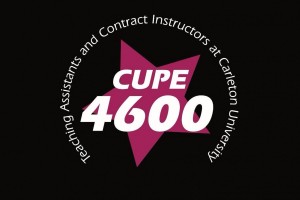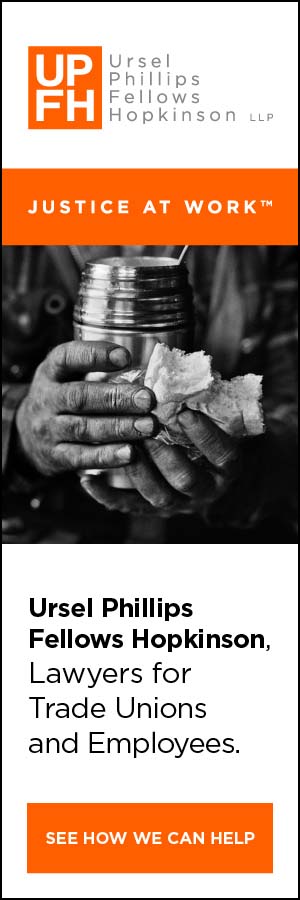Canadian workers and their families gave up their right to sue employers for workplace-related injury, illness or death many decades ago. In exchange, they agreed to the transfer of the power and resources to maintain healthy and safe worksites, and to provide just compensation for workplace deaths and injuries, to various provincial and federal bodies in an implied social contract. Later, occupational health and safety rights were enshrined in legislation across the country.
These rights represented the culmination of decades of struggle by workers and their unions for safer workplaces. Most legislation was brought in during the 1970s, when union power was at its zenith. At the time, workers were optimistic that regulations would be complied with and enforced. But, workers are not being protected by this arrangement; instead, appallingly unsafe conditions are being hidden away from the public's view, and workers have been left with little or no power to ensure their health and safety at work.
The social contract that bound workers and their employers no longer works. It must be renegotiated. In this era of deregulation and funding squeezes on government regulatory programs, there isn't adequate monitoring and enforcement. Yet workers have no power to act on their own behalf. Unhealthy hazardous exposures and other travesties are framed as "covered by WHMIS" (Workplace Hazardous Materials Information System), so there's no need for the public to know about them or be concerned. But, unless we turn occupational health and safety issues into public health issues that demand everyone's concern and participation, we will make little headway in negotiating a new social contract for workers.
THE THREE Rs, WITH SASS
More on this, but first a history of the "Three Rs:" the right to know, the right to participate, and the right to refuse unsafe work. (Also, the right to no discrimination for raising the issues.)
In the '70s in Canada, the father of the Three Rs was Bob Sass. With a brilliant mind and wit, and an unforgettable character, Sass is the New York City-born son of an Eastern European immigrant, a socialist who founded the Queens and Brooklyn local of the window washers' union, which later merged with the Service Employees International Union. (For more information on Bob Sass and the right-to-know occupational health and safety movement in Canada, see Doug Smith's excellent book Consulted to Death: How Canada's Workplace Health and Safety System Fails Workers.)
Sass worked as a window washer for 12 years while obtaining a degree in English and philosophy from the City University of New York. After graduation he went to work as an organizer for the local municipal workers' union, and then became education and research director for the International Ladies Garment Workers Union. He continued his academic work, gaining a degree in industrial relations and becoming Cornell University's director of labour education.
INFORMATION IS NOT POWER
In 1969, Sass moved to Canada to teach at the University of Saskatchewan and, when the New Democrats under Alan Blakeney won the 1971 election, he was quickly appointed to head the government's mediation and industrial relations branch. Two years later he was promoted to associate deputy minister of labour and given responsibility for overseeing Saskatchewan's health and safety laws.
Sass's gospel of the Three Rs set people on fire. Workers could not rely on employers or governments to look after their health and safety. They had to do it themselves. The Three Rs gave them the tools to do this. But Sass's vision of the right to participate went far beyond the right to be a member of a joint health and safety committee, recommendations from which could be rejected by management because they were too costly, or because management simply chose to ignore them. Sass envisioned these rights as empowering workers to have democratic input into how their workplace was designed, the pace of work, as well as into exposures to hazardous chemicals.
Sass became critical of the right to know. Sure this right might provide workers with information about the safety of workplace products and practices. But what could they do about it? "They need the information," Sass said, "but information isn't power. Information is information. Power is power."
ADVOCATES WITHOUT POWER
Having the Three Rs meant that workers and committees, at best, would become quasi-regulators but without the power to impose fines, undertake remedial actions, or require employers or authorities to undertake such actions, let alone have the power to democratize the workplace.
Joint health and safety committees could be strong advocates, but they are advisory only. They have no power. Any worker will tell you that when you are in a recession, your shopfloor power goes down the drain. Now, after nearly four decades of the Three Rs, employers still control the workplace. The Big R, the right of management to manage, prevails. And cutting enforcement and "red-tape" is all part of the long-term, well-orchestrated strategy to undermine democracy in the name of the market, further weakening the fragile system of protection workers and their unions worked so hard to achieve over many decades.
So, how can workers re-establish their right to protect themselves from exposure to hazardous chemicals? How can they have a real say in important health and safety issues?
WORKERS' HEALTH ABOVE THE BOTTOM LINE
Certainly, more careful academic research needs to be done to document exposures, disease and other injuries. And, yes, unions need to do more training and advocacy. And for sure the labour movement must work to create a culture of enforcement and encourage members to assert their rights. But how can employers be encouraged to put workers' health above their bottom line, especially when many illnesses like cancers don't manifest themselves for 20 or 30 years down the road? And how can we shatter the discourse about the need for an unfettered market?
For workers to gain the power they need in order to be able to protect themselves from exposure, occupational health issues must be brought into the public arena. We can no longer leave it to the "experts" - actuaries, psychologists, medical doctors - who, more often than not, come down on the side of the employers. Occupational health issues must become public health issues so they're not secreted away in the workplace where they can be marginalized by employers and employer-backed governments.
BUILDING A CROWD
Workplace health issues need to become part of our daily consciousness. Unions can't make that happen on their own. They need to think outside the workplace box and to build coalitions in order to build awareness, a crowd, and power. As the saying goes, "If you want to go fast, go alone. If you want to go far, go together."
These need to be coalitions of varied and "unlikely" partners, including public health, children's health advocacy groups, faith organizations, environmentalists who share class values, and consumer and social justice advocates. The coalitions need to be resourced and long-term and need to share decision-making and power. They will fail if only one or two groups set the agenda and ask the rest to come along after key decisions have been made. And they need to use a variety of tactics and communications tools, and can't be just social media-based.
It is often said that "It takes a village to raise a child." We hope that, in Canada, despite the onslaught of libertarian, individualistic values, Canadians still understand what that means. It's time to take this further and enliven people's hearts and minds to understand what it means when we say: "It takes a whole society to make a workplace healthy and safe, and to care for working people."
_______________________________________________________
FLUSH WITH VICTORY - A SIDEBAR
Here's a piece of history that shows how framing a workplace health issue as a public health issue can work. (Thank you to Doug Smith for giving us these stories.) Colin Lambert, a long-time CUPE environment, health and safety representative (Canadian Union of Public Employees), at one time was a hard-rock miner in Sudbury, Ontario, and a member of the United Steelworkers. He tells the story of how disorienting it was to go underground, losing your peripheral vision and being able to see only what was lit by your headlight; losing sound as you descended and then, once down, hearing every sound as you worried about a cave-in. And there were no toilets. The
men had to use a communal trench.
The health and safety committee repeatedly and unsuccessfully tried to get toilets underground. Apparently, this was too hard and expensive to do. Not "practicable." So, the union created a public health campaign, saying that the health of miners' wives and children could be compromised because of exposure to multiple pathogens. The good people of Sudbury wouldn't tolerate raw sewage running through their community. So the men got their toilet facilities.
The union took the issue out of the dirty secret of their workplace and worked with the community to build public awareness, political will and the power to change the situation.
Here's another example of an issue that could capture public attention, today: in terms of cancer prevention and other chronic health issues, we could point out that millions of dollars are being off-loaded onto the public health system because workers compensation boards are rejecting illnesses associated with occupational exposures. If we had real power, we could re-direct those expenses to the compensation board budgets they belong to.
_______________________________________________________
Mae Burrows is a long-time environmental and social justice activist, and her partner, Donald Gutstein, is an adjunct professor in the School of Communication at Simon Fraser University.














